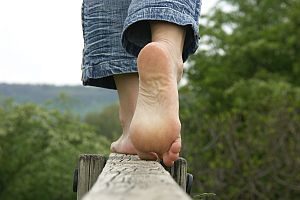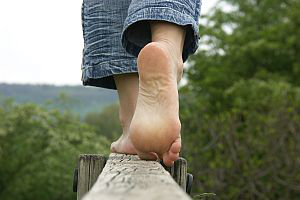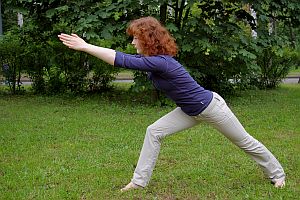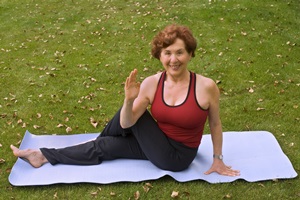Where Does Good Balance and Coordination Come From? Introduction to Your Proprioceptive System

Proprioception is a complex system of anatomical checks and balances, neural impulses, and brain functions that controls our sense of balance, coordination, and agility. Put most simply, proprioception is the “sixth sense” that enables you to scratch your head without looking in a mirror or climb a flight of stairs without having to look at each step.
Most of us are so accustomed to proprioception that we take it for granted. Its development starts soon after we are born and is observed in infants as soon as they gain control of their neck muscles. When the infant’s body tilts in any direction, its head also tilts in the opposite direction to level its eyes with the horizon. This “righting reflex” is the beginning of our sense of balance.
More technically, proprioception is your body’s ability to transmit a sense of its position in space, analyze that information, and react—either consciously or unconsciously—to stimuli with the proper movement and force. Proprioceptors are a specialized type of motor and sensory nerve that transmits impulses to the central nervous system (in particular, the area of the brain known as the cerebellum) from stimuli felt by the muscles, tendons, joints, and skin. The impulses transmitted by proprioceptors contain vital information, such as the amount of tension in a particular muscle and the relative position of a body part when it is moving.
, Proprioception is what enables you to reach for a glass and actually find it in space. It is also what allows you to pick up the glass with just the right amount of force, neither dropping it nor breaking it by squeezing too hard. Proprioception is what enables you to keep your balance when walking on uneven surfaces or when riding a bicycle. The impulses from proprioception combine with input received from the vestibular system (the fluid-filled network in the inner ear that enables us to feel the pull of gravity and know which direction is “up”) and with input from the visual system to create our sense of balance.
However, just as our eyes become weaker with age, so can the proprioceptive system, leading to a loss of proper balance. This is one of the reasons that falling is the number one cause of hospital admissions for people over 60. Something has gone wrong with the complex processing of information needed to maintain their balance, so older people are more likely to slip and fall on stairs or on slippery sidewalks and injure themselves.
Fortunately, you can strengthen your proprioceptive system by practicing simple balance exercises, thus keeping keep your sense of balance from weakening as you grow older. There are many forms of inexpensive exercise equipment (such as BOSU or Bongo Boards) that enable you to stand on a platform that is designed to be wobbly. This instability forces your muscles and your proprioceptive system to work more, and thus become stronger. So if you are over the age of 50, you should consider speaking to your chiropractor about exercises to improve your proprioception. They are very simple but can greatly improve your overall sense of balance, therefore significantly reducing your risk of injury from falls as you grow older. To schedule an appointment with Dr. Oblander, call 406-652-3553.

 If you are middle-aged (40-60, by some definitions) or older, here’s 15-second self-test for you. Do you often find yourself needing to sit down or steady yourself against a table when putting on your shoes or stepping into pants? Do you increasingly need to use the armrests of your chair to “push off” when getting up? Do you generally hold on to handrails whenever you go up and down stairs? If you stand with your feet close together, do you feel unsteady and unable to balance yourself properly?
If you are middle-aged (40-60, by some definitions) or older, here’s 15-second self-test for you. Do you often find yourself needing to sit down or steady yourself against a table when putting on your shoes or stepping into pants? Do you increasingly need to use the armrests of your chair to “push off” when getting up? Do you generally hold on to handrails whenever you go up and down stairs? If you stand with your feet close together, do you feel unsteady and unable to balance yourself properly? It’s sad but true: As we get older, our balance tends to deteriorate and our reflexes tend to slow. When you’re aware that it’s happening, it can be very frustrating. But when you’re not aware of these gradual changes, they can actually be dangerous as well. This is especially true as you exit middle age.
It’s sad but true: As we get older, our balance tends to deteriorate and our reflexes tend to slow. When you’re aware that it’s happening, it can be very frustrating. But when you’re not aware of these gradual changes, they can actually be dangerous as well. This is especially true as you exit middle age.